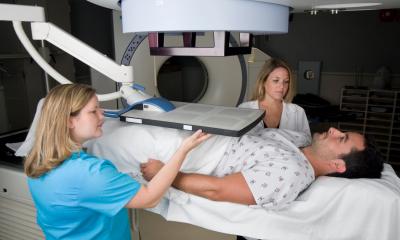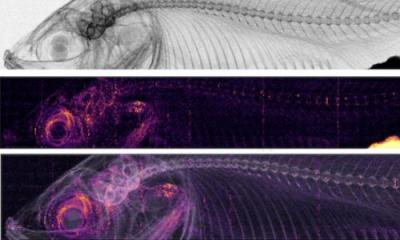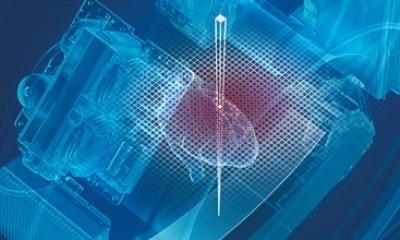Learning to ‚eyeball‘ where diagnosis is more art than science
If you are new to the ESTI meeting, a resident or a junior in the radiology group, then this is the course you do not want to miss,” says Katharina Marten-Engelke. On Saturday morning, she will moderate a course on HRCT basics from some of the leading experts in the field to provide an overview. The second half of the two-hour course promises to be challenging, even for very experienced radiologists.

High resolution CT is a complex topic, and frequently it is difficult for residents to find a mentor who is truly familiar with the issues,” she said, adding “Myself, I did the major part of my residency in Germany, but for HRCT of
nterstitial lung disease, I attended the Royal Brompton Hospital in London, just to report and research with the European capacities in the field.” The first two talks will address patternbased differential diagnosis, while the next two presentations will cover the important pulmonary conditions of fibrosing disorders and small airways diseases.
HRCT has become the first choice investigation for diagnosis of diffuse interstitial lung diseases with very fine anatomical resolution of the parenchyma,” she said. “Chest radiologists need to be pattern recognizers,”
she emphasized, saying, “This patternbased approach is what I like particularly about the ESTI “Basic” HRCT Course. It truly helps radiologists to deliver narrow differential diagnoses.”
Diagnosis is based on recognition of four major patterns: 1. the reticular pattern, 2. the nodular pattern, 3. increased density, which includes ground glass opacification and consolidation, and 4. decreased density. The course will advance from basic patterns based on anatomical details to more difficult patterns, and the subtype patterns that provide the basis for a differential diagnosis.
The talks by Susan Copley on fibrosing lung disease, and by Johnny Verschakelen on small airways disease, are more advanced,” she cautioned. “Both topics require acquisition of high expertise, and there is no textbook currently offering such a pragmatic pattern-based differential diagnostic approach of pulmonary fibrosis,” she
said. With the advances in CT technology and post-processing of images, can we not change the current paradigm just to automate recognition pattern and disease extent?
“Not quite,” said Marten-Engelke, author of multiple papers assessing the value of computer- aided detection (CAD). “While there were attempts using computer-aided detection for the quantification of diffuse lung disease, the intrinsic morphological problems with overlaps between infiltrative and fibrotic processes are currently still too complex for computer analysis, as most CAD systems are based on threshold segmentation of the pulmonary parenchyma. This leaves radiologists to interpret images the old-fashioned way, or eye-balling,” she said.
Nonetheless, it will be an important point for discussion in the session in order to gain a perspective on future developments. Another discussion she expects to knockoff for the session will concern the detection of interstitial abnormalities in otherwise healthy people, thanks to the increased capabilities of modern HRCT. “These abnormalities may possibly represent subclinical interstitial disease or early pulmonary fibrosis or, alternatively, they will not develop into anything at all. Yet these are findings that should be managed.”
For your diary
Moderation of “Basic HRCT Course”
Katharina Marten-Engelke,
Göttingen, Germany
Saturday June 23 at 11:00 – 13:00
####
Profile
Professor Katharina Marten-Engelke graduated in Göttingen and, after a one-year research stipendium at Harvard Medical School in Optical Imaging, she had her training in Radiology at the Technical University Munich. She visited the Royal Brompton Hospital Radiology Department as a research fellow for special training and research in interstitial lung disease in 2003. She has clinical and research interests in chest radiology particular with a focus on interstitial lung disease and is Associate Professor at the Department of Radiology at the University of Göttingen with a part time post in private practice. She has a daughter and loves classical music.
25.06.2012











